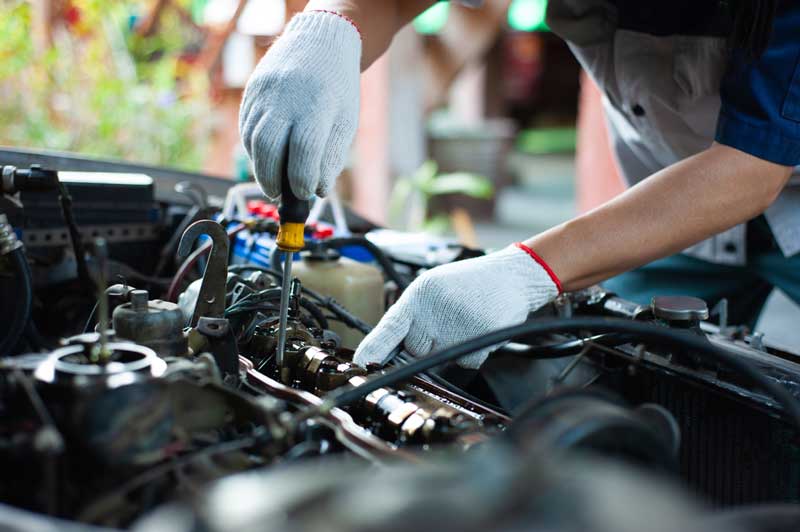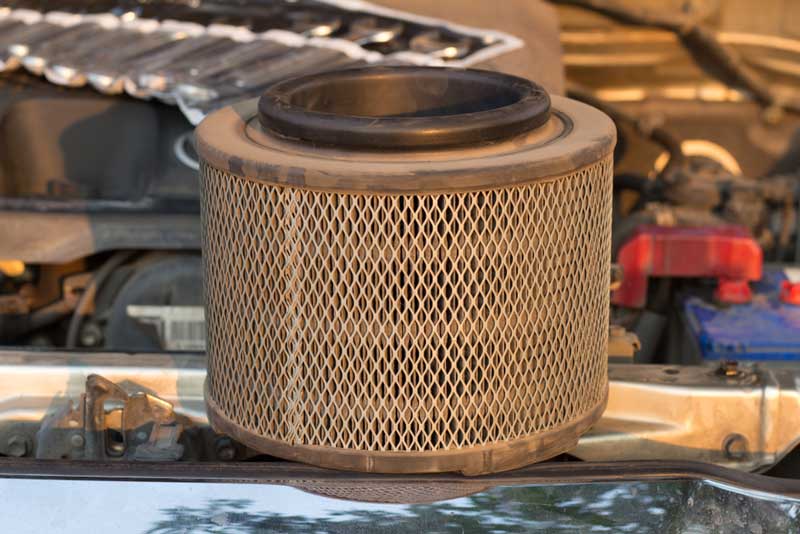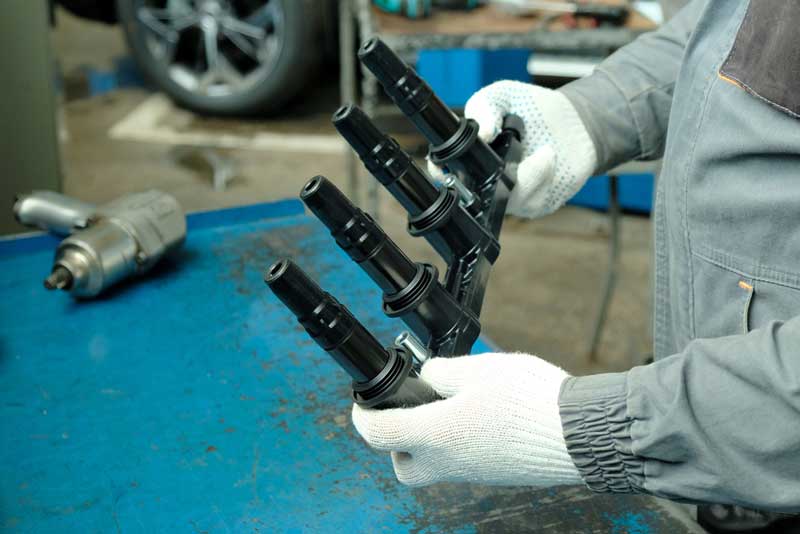Is your car recommended for fuel induction services by your engineer and you are wondering what Fuel Induction Service means? Would it improve my vehicle’s performance?
The fuel induction service isn’t common to most, and so many people will question the efficiency of their car’s engine after the service.
This article goes through all you need to know about fuel induction services, such as its meaning, why it is performed, signs you will need fuel induction services and lots more.
Let’s get started!
What is a Fuel Induction Service?
Fuel induction service is a maintenance process where carbon buildup is cleared from parts of the engine. While running your car, buildup from air and fuel can cause carbon deposits inside the engine.
This buildup exhausts your fuel quicker than usual, allowing you to spend more money both on fuel and repair.
Therefore, the engineer uses a throttle cleaning substance to manually clean the plate and throttle body.
There are benefits to clearing carbon from your car; here they are below:
- Improves the vehicle’s gas mileage.
- Smoothens the engine’s idle.
- Improves the response of the throttle.
Is it advisable to do the fuel induction service at an experienced engineer’s workshop? —- Yes, you should if it is necessary.
I would also advise it if you’re experiencing misfires due to leaking intake valves or a direct-injected engine that runs —- otherwise, no.
Well, the major part of an Induction can be done by you with the necessary equipment at home.
The steps to follow will be found in the cause of the article below.
Also Read: Throttle Position Sensor Symptoms (Causes & Solutions)
Why Perform a Fuel Induction Service?
It is done to clear the intake manifold, intake valve, throttle body, and other parts that cause the mixture of fuel and air.
The older a car gets, the more carbon deposits it collects from the sides of the engine’s intake. And this happens when carbon enters through the EGR Valve and the crankcase ventilation.
This occurs on a direct-injected fuel engine; it disperses the fuel straight inside the combustion chamber. While for older engines, the fuel is dispersed before the intake valve, which helps clean them up and avoid reoccurring problems.
The carbon deposits are built on the body of the valve, intake manifold, intake pipes, and intake valves. And that is the reason why fuel induction service is done, to clean the carbon deposits from these parts.
This exercise affects the mixture of the air and the fuel and the seal of the intake valve, improving the engine’s performance.
- Pros of a fuel induction service.
- The intake valve is cleansed
- The intake manifold is cleansed
- The throttle body is cleansed
- It also cleans the other flap in the intake manifold when fitted.

When Should I Do a Fuel Induction Service?
A Fuel Induction Service is not one of the milage-based maintenance, however, it should be part of your maintenance routine. We will recommend this service every 60,000 miles or whenever you notice a lag in performance in your vehicle.
There are signs to note if your car requires a fuel induction.
Slower Acceleration.
Slower acceleration is a common sign of excess carbon buildup. This excessive buildup of carbon makes the throttle input respond slowly. If your car stops picking up speed after running some miles, it means a carbon clearing exercise is needed. As discussed earlier, it is advised you do a direct injecting gas engine.
Slow acceleration could also mean other problems or a plethora. However, consult your engineer before drawing conclusions on whether the car needs to be cleared of some carbon.
Decreased Fuel Efficiency.
Engines were usually built to work at a specific range, and any decrease in the range it was made to work means a problem in the entire process. Deficiency is a prominent sign of carbon deposits. If the mpg detects a drop, then a carbon clearing exercise is highly required.
Rough Idling.
Engines that use gasoline are common for their refinement. Engines of recent times (Modern) are highly refined that you find it hard to know if you’ve turned it on already. However, the older an engine gets, the lower its refinement becomes.
And the more of this carbon buildup, the more vibration the engine experiences while idling. It is also a sign your vehicle needs fuel induction.’
Engine Knocking.
The excessive buildup of carbon in an engine could start knocking the engine. A knocked engine isn’t only detrimental to your engine and causes noise pollution. Of course, an engine knocking could mean several other things, just like the other symptoms highlighted above. But carbon deposits are part of them; it won’t hurt to check either way.
Hard Starting.
When an engine reaches sixty thousand to seventy thousand miles, it usually finds starting difficult, particularly at dawn. When you experience this, it could mean your engine needs to be cleared of this dirt.
Greater Emissions.
Carbon deposits sure affect the efficiency of an engine; it also affects the emission. So if your car cannot pass an emission test, and you aren’t sure why it’s unable to, this could be the reason.
Power Loss While Driving.
This symptom is related to slower acceleration. The car could lose power should the motor be incapable of carrying out an easy operation because of the buildup of carbon deposits inside it. With this, a carbon clearing exercise is necessary to help improve the engine’s performance.
Not Waiting For Symptoms
Of all recommendations, this is the last. However, if your car uses a gasoline direct injection engine and has about Sixty thousand to Seventy thousand miles, then you might need to keep a close eye on it.
A direct-injected engine is expected to have carbon buildup as it works. And a carbon clearing exercise is usually not included in the manufacturer’s maintenance schedule. Still, your throttle body and the engine should be cleared of carbon deposits. And should your engineer suggest a carbon clearing exercise, he/she isn’t wrong.
But clearing out the carbon deposits wouldn’t be bad for the engine because it will improve its performance and expand its longevity. So you may not need to stay glued to a petrol oil or agree to get a new engine if your mechanic suggests it.
Also Read: Car Blowing White Smoke After Oil Change (Causes & Fix)
What Makes Up Fuel Induction Service, and How Is It Performed?
Below are the steps involved in performing a fuel induction service, and there are steps you can do at home by yourself.
Intake Valve Cleaning
It involves spraying a special liquid inside the intake valve, which requires the engine to be on while it is done. So it is done while the engine is active. The engine is then filled with a throttle cleaning fluid and air. The essence of this exercise is to clean any carbon deposits in the intake valve or the intake.
The component dissolves every carbon deposit, and the residual of these deposits is passed out through the exhaust pipe.
Another method of this procedure can be done by you at home, using Seafoam.
Fuel Injector Cleaning
This service is an added step on the menu that is sometimes suggested by your engineer when a carbon clearing exercise is carried out. This step involves filling the fuel tank with a special additive that cleans the fuel injectors and pump.
There is certain kind of injector cleaner additives that help you do the job. But you can also do this yourself with these additives.
Throttle Body Cleaning
For fuel induction, this service is optional, depending on where it’s being repaired. Often, an injector cleaner is put into the engine to clean the throttle body.
For the throttle body to be cleaned, it must first be taken out of the engine by the mechanic. A throttle cleaner does this cleaning to clear off the carbon. This liquid cleaner comes in spray cans.
If you wish to carry out this service yourself, feel free to check out our tips on How to clean a throttle body.
How Much Does a Fuel Induction Service Cost?
The impact of a fuel induction in your engine outweighs whatever it costs. Still, it isn’t that expensive; it costs $150, depending on the product’s brand, labor charges, and so on.
Well, a fuel induction service doesn’t cost much, as so much time isn’t required on the job, and the machinery is also affordable. However, it would be wise to also, keep a lookout for scammers trying to extort you through this exercise.
These dealers deceive you with the importance of a fuel induction service, and most customers fall prey because the service is affordable.
Though fuel induction service is good for your engine, it sometimes isn’t important in most cases. So if your engine is new and a dealer pitches a fuel induction service to you, turn the other way and save those cash.

How Regularly Should You Perform a Fuel Induction Service?
The actual time recommended for fuel induction is Thirty thousand to Sixty thousand miles, based on the manufacturer’s specifications.
So this service is not like changing oil, or it has to be done every Three thousand to Seven thousand miles based on the make of the car and the owner’s manual specifications. Fortunately, fuel induction is affordable and improves the lifespan of your car’s engine.
However, you shouldn’t wait till Sixty thousand miles to do the needful if its performance is poor. Car maintenance advises fuel induction when your gas usage is decreased, or there is an issue with the engine. The induction is a helpful and affordable process for your car.
For instance, a GDI induction is more affordable than working an already affected engine whose carbon deposits have greatly affected its efficiency, intensifying the problem.
Also Read: Engine Replacement Cost
What Would Happen if I Do Not Do the Fuel Induction Service on Time?
The fuel induction process is not as important as changing the timing or serpentine belt. Instead, it is that car maintenance exercise that can be stalled for a while. Still, it shouldn’t be completely overlooked.
Now should your GDI engine exhibit any of the signs, you should check it out. At this point, a carbon clearing exercise should be considered in adherence to the recommendation of a skilled engineer.
Using the car without fixing the problem will only increase the damage, and your car may experience slower acceleration, steeper drop in fuel efficiency, rough idle, and so on. This could as well reduce the lifespan of your engine.
And if you turn a blind eye to these signs, be prepared for the worse. The valve could get blocked with carbon or dirt, whose damage could be irreversible, so the engineer may need to take out the valves so he/she can access them.
After which, the valves should be put in a sandblasting machine, then the albeit can be blasted with the walnut shell. The softer shells of the walnut could blast the carbon off the valve.
However, this process is quite expensive, costing thousands of dollars. So it’ll not be unwise If a mechanic suggests a carbon clearing exercise.
Frequently Asked Questions – Fuel Induction Service
Is a fuel induction service necessary?
When Do I Need Fuel Induction Service? Unfortunately, fuel induction isn’t usually included in the mileage-based maintenance plan on your instruction manual. Still, it shouldn’t be ruled out of your vehicle’s maintenance routine, so it is advised after every Sixty thousand miles or whenever you observe a snag in its performance.
What is a fuel induction service cost?
The cost of a fuel induction service makes people resolve to do it at home alone. Unfortunately, for most workshops and garages, the price is about One Hundred and Fifty dollars to Two Hundred dollars. And most times, the process takes at most Twenty minutes to complete.
Can I do a fuel induction service yourself?
If the direct-injected engine of your car runs rough or misfires due to leakage in the intake valves, then a self-service is advised; otherwise, take it to your engineer for repair. Luckily, the major part of the induction can be done by you with the necessary products at home.
What is a VW fuel induction service?
This is the method of cleaning soft deposits in the intake system of your engine without disassembling it—by spraying a cleaning agent into the intake system.
Is fuel induction service the same as fuel injection service?
The former involves using a chemical substance to clean and improve the engine’s performance. While the latter extracts water off the car’s system, clears the plate and throttle body, lubricates the valves, and clears carbon buildup.
How often should you get a fuel injection service?
Basically, cars manufactured from 2004 and above are expected to have a fuel injection cleaning every Three years or Forty-five thousand miles to make the engine more efficient.
How long does a fuel injection service take?
After the chemical is passed in with the help of the injector —- cleaning the injector while it passes through it —- the engine is turned on for Five to Ten minutes on the cleaning machine. This process takes more time than the pouring-in stage and requires skilled enginner and equipment, as there are a lot of disadvantages associated with applying the on-car cleaning technique.
Conclusion – Fuel Induction Service
Carbon clearing exercise, otherwise known as fuel induction service, is a highly important practice aiming to restore engines infested with carbon and improve their performance.
You now understand the essence of fuel induction service and why it should be done, advisably after Six thousand miles. If you can, you can run the process yourself with the steps highlighted above. And if you can’t, feel free to seek the help of a professional to avoid creating more damage.

